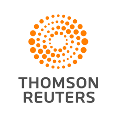Thomson Reuters: tracking science's hottest and emerging fields
A new report, "Research Fronts 2014: 100 Top Ranked Specialties in the Sciences and Social Sciences" offers a selection of particularly new and active areas of investigation -- science's "hottest" fields. In addition to featuring 100 Research Fronts selected for their currency and prominence, the report offers an additional 44 "emerging" fronts that derive primarily from papers published very recently. The report represents collaboration between Thomson Reuters and the National Science Library, Chinese Academy of Sciences.
Instead of relying on a hopeless scenario of human analysts attempting to manually track the literature, Research Fronts literally form themselves. Scientists, observing one of the cardinal rules of scholarship, explicitly cite previous work that is most germane and important to their ongoing research. Analysis reveals that, in many instances, particular papers tend to be cited together (or, to use the technical term, are "co-cited") by scientists whose work shares some cognitive, technical, or procedural connection.
In some cases, the cited scientists themselves may not be entirely aware of these links, as they approach a given problem from different angles, or even different disciplines. It is actually the citations -- the scientists' work as acknowledged and applied by other researchers -- that identify the commonality in their research. And these influential papers, when co-cited above a certain threshold, form the foundational "core" of a Research Front, surrounded by later papers that cite the core group. Thus, a front is born: a cluster of closely related research, revealed entirely by citation patterns.
Research Fronts vary in size. Larger ones have dozens of core papers, others fewer than 10. Some generate thousands of citations, others a comparative handful. In some, the core papers are predominantly older, dating from six years ago, while "younger" fronts have core papers from the current year. In all, Thomson Reuters tracks some 9,000 fronts, reflecting all fields of science.
For the new report, Thomson Reuters analysts, joined by their counterparts at the National Science Library, Chinese Academy of Sciences, condensed 21 main fields into 10 broad areas covering the biomedical, physical, and social sciences. Within each area, they then identified 10 Research Fronts that met specific criteria involving a comparatively high number of citations (i.e., visible and influential fronts) combined with predominantly recent core papers (i.e., "young" fronts). The result was 100 "hot" Research Fronts.
The analysts also sought out fronts whose core literature was notably recent, dating from the second half of 2012 or later. Statistical analysis produced 44 "emerging" fronts, in which a young core denotes the rapid accumulation and development of knowledge in a new area.
For each of the 10 subject groupings listing hot Research Fronts, one front is selected for expanded treatment. For example, in the main field of Chemistry and Materials Science, the discussion for the Research Front concerning "functional organic metal frameworks" describes how these chemical structures have been harnessed in energy storage, sensing, and other applications. In addition, the authors, institutions, and countries most represented in the core literature are specified.
Within the Biological Sciences area, another hot field, and the subject of an "emerging front," is research devoted to CRISPR/Cas systems for genome editing. Based on processes associated with adaptive immunity in bacteria, CRISPR/Cas technology is allowing researchers to edit and repair genes in animal models, holding out the promise that such manipulation will be possible to cure and prevent human disease.
It remains to be seen how these Research Fronts, and the all others specified in the report, will evolve, grow, branch out, and give rise to other specialty areas, but citations will tell the tale.
Christopher King

